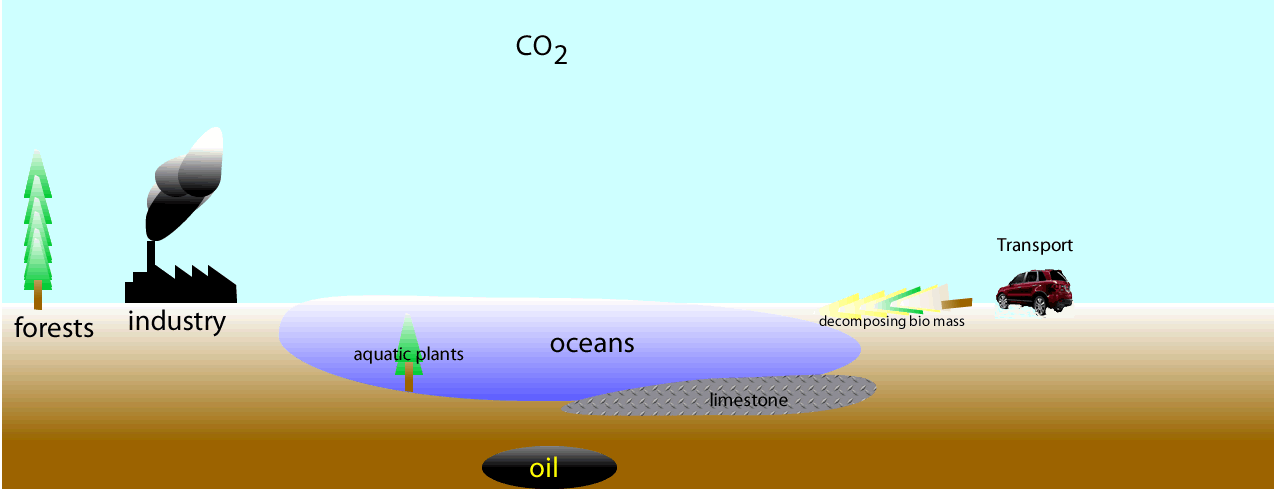Carbon Cycle
For junior science
View the video on the right and answer the questions below.
1) Carbon is found in the atmosphere as
2) Carbon is not found in
3) Movement of carbon across the many places it is found in is called the
4) The process that traps carbon, from the atmosphere, in the form of plant matter is called
5) What process does not release carbon back into the atmosphere
6) Fossil fuels are
7) Carbon dioxide can move between
8) Aquatic organisms make their hard shells from carbon they absorb from
9) Levels of carbon dioxide in the air have increased significantly over the last 100 years. This is largely due to
10) Explain how carbon dioxide contributes to climate change.

Above is a simplified diagram of the amount of carbon stored in different carbon sinks and the amount that cycles between the carbon sinks in gigatons.
The white writing represents carbon in carbon sinks while the yellow represents the flow of carbon between carbon sinks each year.
The image above was obtained from http://genomics.energy.gov.

Draw the diagram above on a butcher's paper.
Indicate with arrows the flow of carbon amongst the different carbon sinks shown.
Label the following terms on your diagram and give a one sentence explanation as to its impact on the carbon cycle.
1) Photosynthesis
2) Limestone and fossil fuel as carbon sinks.
3) Oceans
4) Industry and transport
5) Decomposing biomass.
10 marks
6) Discuss the role interactions involving the lithosphere, biosphere, atmosphere and hydrosphere play in the carbon cycle.
On the same paper draw how the following forms of energy are generated. For each discuss the following points
- How electrical energy is generated from other sources.
- Its impact on atmospheric carbon dioxide
- Its ability to power a city the size of Melbourne
- Its major hazards
1) Hydroelectricity
2) Nuclear powered generators
3) Wind powered generators
4) Solar electricity
5) Coal fired electricity
20 marks
What is carbon sequestration? Give an example of how this is applied to reducing carbon dioxide emissions.
3 marks